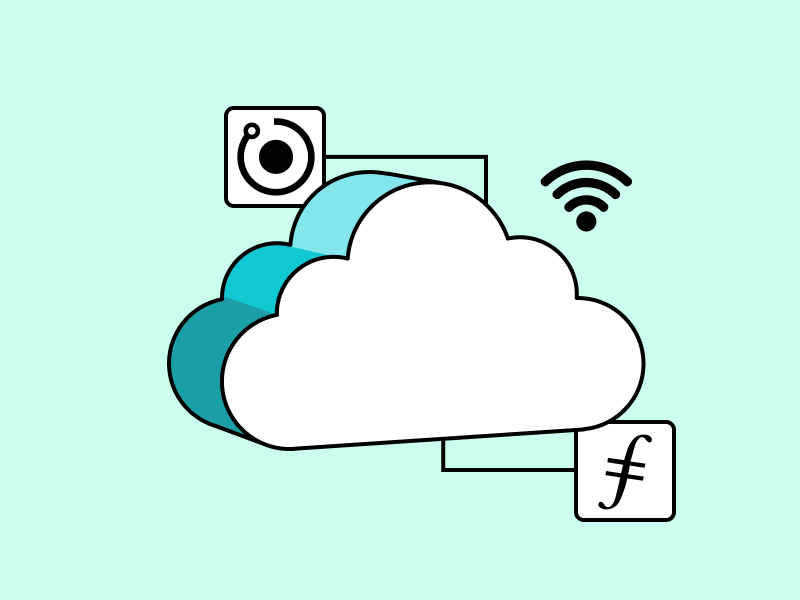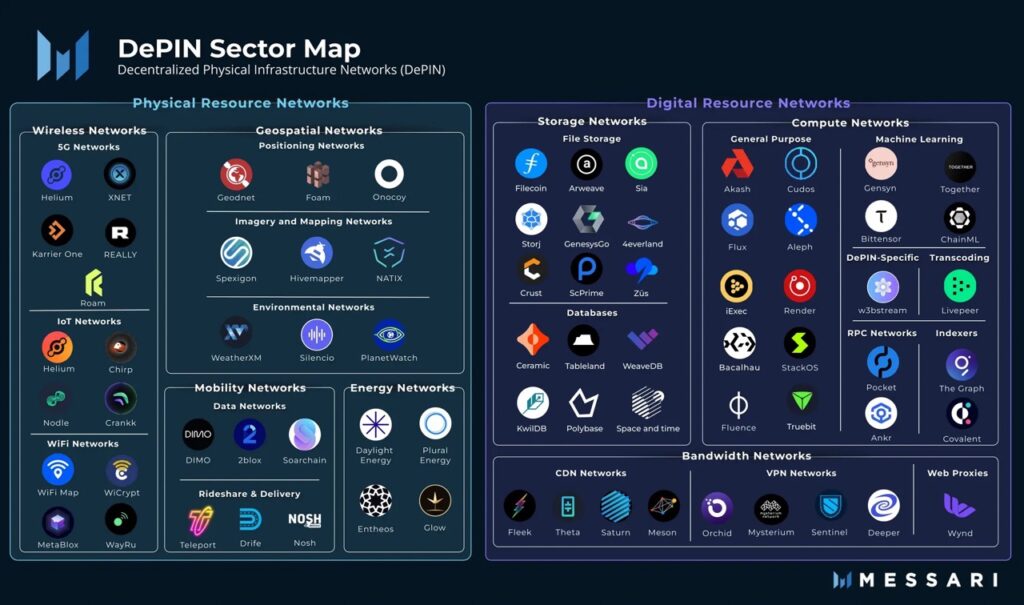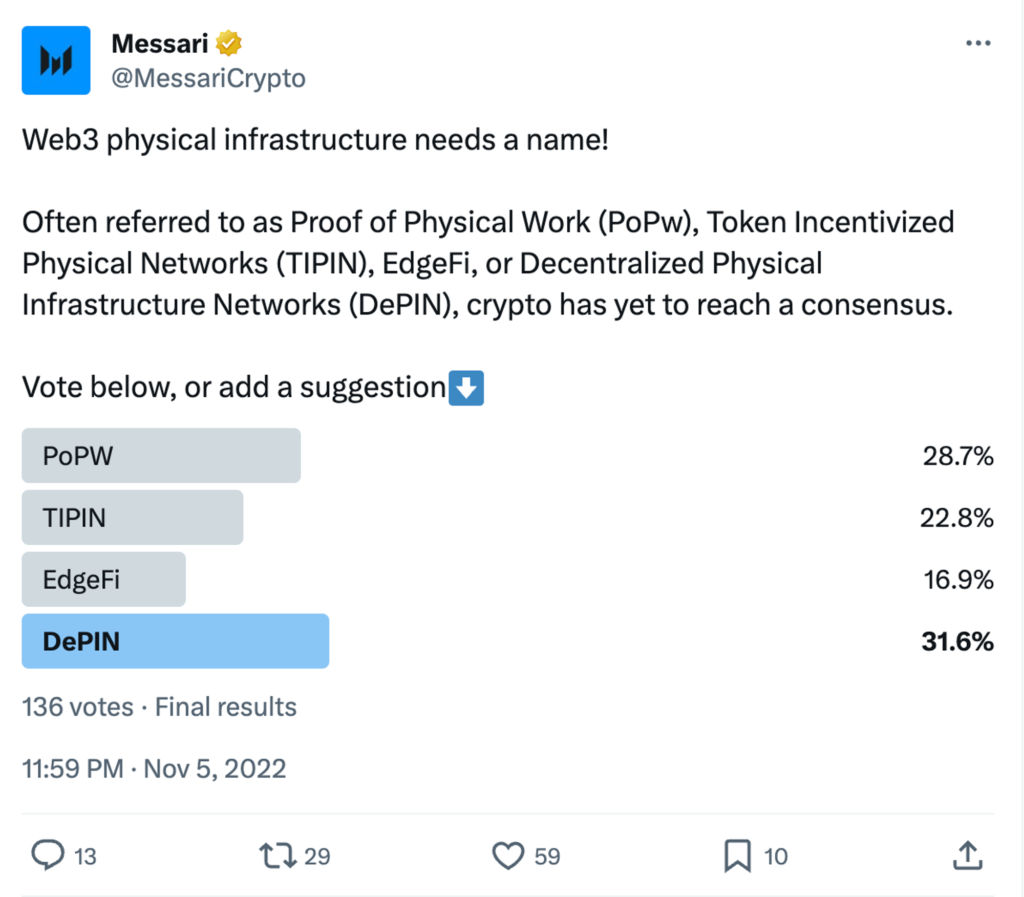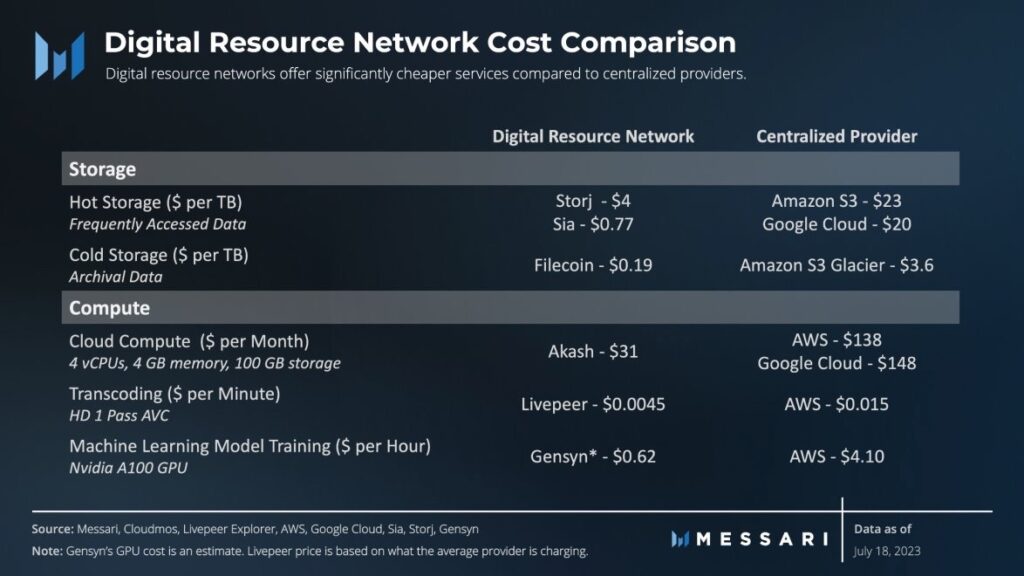Learn About DePIN (Decentralized Physical Infrastructure Network)

The crypto world has been enlivened by various narratives such as Real-world Asset (RWA), decentralized cloud, liquid staking , layer 2 , and various other narratives. Towards the end of 2023, a new narrative has emerged that is in the spotlight, namely DePIN or Decentralized Physical Infrastructure Network. With Total Value Locked (TVL) reaching around 19.5 billion US dollars, this narrative has driven crypto adoption on a large scale. DePIN opens up opportunities to use services such as wifi, transportation, data storage, maps, and so on, while earning rewards. This article will discuss further what DePIN is, which is now a hot topic in the crypto world.
Article Summary
- 🌐 DePIN is a concept that uses token rewards and blockchain technology to encourage the development of physical infrastructure in the real world.
- 💰 DePIN aims to shift the traditional centralized model to a decentralized model. DePIN involves global user participation to overcome dependence on large entities and implement a ' sharing economy' model .
- 🔄 The DePIN Flywheel concept helps understand how the growth of one aspect within it drives the growth of other aspects. The formation of a positive growth cycle involves infrastructure providers earning tokens as an incentive to create organic network growth and meet demand from users.
- 👀 Some crypto projects that apply the DePIN model include Helium (HNT), Filecoin (FIL), Render (RNDR), IoTeX (IOTX), and Livepeer (LPT).
What is DePIN (Decentralized Physical Infrastructure Network)?
DePIN is a concept that uses token rewards to encourage the construction and development of physical infrastructure in the real world. Examples of physical infrastructure are wireless networks, cloud services, mobility networks, and power grids. Most of them have been dominated by large companies due to high capital requirements.
Centralized entities have a near monopoly on prices and services offered to end users, leading to a lack of competition and innovation. The DePIN project seeks to solve some of these problems by leveraging blockchain technology , token incentives, and the power of the internet.
The main feature of DePIN is the shift from a traditional centralized model to a decentralized one. DePIN involves global user participation to overcome dependence on large entities and implement a ' sharing economy' model.
For example, Hivemapper uses the drive-to-earn concept . It gives users the opportunity to participate in collecting road images and creating a decentralized version of Google Map via the car's dashboard camera . Users will get HONEY tokens for each data provided.
DePIN creates an entirely new design space for physical infrastructure. Each DePIN network will involve real-world devices that generate and share their data.
Quoted from Messari, the DePIN sector map was initially divided into four main categories: servers, wireless, sensors and energy networks. However, because of the many variations of this category, subcategories were added, namely Physical Resource Networks (PRN) and Digital Resource Networks (DRN).
- PRN: Incentivizes users to use location-dependent, non-interchangeable hardware. Examples include energy, geospatial data and connectivity.
- DRN: Incentivizes participants to use hardware that offers interchangeable digital resources. This involves aspects such as computing, storage, and bandwidth.
 Source: Messari
Source: Messari
DePIN Concept Terms
The term DePIN first appeared in the blockchain and crypto industry in November 2022. Messari initiated the use of DePIN through voting on Twitter to name the physical infrastructure of Web3.
Apart from DePIN, several names included in the voting are Proof of Physical Work (PoPw), Token Incentivized Physical Networks (TIPIN), and EdgeFi. 'DePIN' received the most votes with 31.6%.
 Source: Twitter
Source: Twitter
How DePIN Works
As mentioned previously, the DePIN network involves physical devices in the real world that generate and share their data. The greater the data available, the greater the potential for innovation and use of data in developing dApps to support the growth of the DePIN network.
DePIN involves four main components, namely:
- Physical Infrastructure Network : DePIN requires physical infrastructure such as vehicles for mobility networks, solar panels for energy networks, hotspots for wireless networks, and servers for cloud networks.
- Off-chain Computing Infrastructure : DePIN relies on intermediaries that connect physical world data and the blockchain, such as oracles .
- Blockchain Architecture : Each DePIN network interacts with a blockchain architecture that contains smart contract logic . This blockchain acts as a transaction recording device and the center of the token economy.
- Token Incentive : DePIN utilizes the concept of a token economy. Service providers will get rewards in the form of tokens on a network.
DePIN Flywheel
 Source: IoTeX
Source: IoTeX
DePIN Flywheel is a concept that describes how the growth of one aspect can encourage the growth of other aspects. This is then expected to create a sustainable cycle of growth. This process involves several key interrelated steps:
The first step involves infrastructure development, where provider-side participants provide their physical infrastructure and connect it to the DePIN network . This creates the basis for further growth.
Then, provider-side participants earn crypto tokens as incentives for providing infrastructure. These tokens are not only a form of reward, but can also be used within the DePIN ecosystem to gain additional profits.
With the increasing number of participants and infrastructure involved, the DePIN network is experiencing organic growth . This creates a strong foundation for an ecosystem that allows various services and functions to thrive.
Furthermore, with a robust infrastructure in place, more and more users are paying to use services or access data . This creates an income stream that incentivizes participants to continue contributing.
The network's success attracted more investors and new users . The presence of investors supports financial growth, while new users make additional contributions to the network to strengthen its appeal.
Helium uses this Flywheel concept to great effect. He motivated people around the world to build the world's largest IoT network in just three years (400k+ online hotspots globally).
What are the advantages of DePIN?
The future of DePIN promises significant developments in the world of physical infrastructure and blockchain technology . With the rapid growth in the number of connected smart devices and dApps, DePIN has great potential to become a major player in the future.
Here are some of the advantages of DePIN compared to traditional physical infrastructure:
- Decentralized: One of the main advantages of DePIN is the shift from a centralized to a decentralized model. DePIN eliminates dependence on single entities or large companies for the construction and maintenance of physical infrastructure.
- 'Sharing Economy' Model: DePIN applies the principles of the sharing economy. The costs and responsibilities of building and maintaining infrastructure are distributed among supply-side participants (service providers), creating a more cost-effective and equitable model.
- Cheaper Prices: DePIN users can enjoy lower fees compared to traditional models. For example, in data storage, users can choose Filecoin or Storj which are not only more affordable but also provide the opportunity to earn tokens in return.
 Source: Messari
Source: Messari
- Expanding Innovation: By removing barriers to entry associated with traditional infrastructure, DePIN motivates new players to compete in markets previously dominated by a number of established players.
DePIN Crypto Project Example
1. Helium (HNT)
Helium is a DePIN project that builds a decentralized wireless network that allows users to earn tokens (HNT) in exchange for providing wireless connectivity. Users can deploy Helium hotspots to provide wireless connectivity in an area, and in return, they are awarded HNT tokens.
Helium expands its network with Helium Mobile. The Helium Mobile service combines the Helium network with a 5G cellular network. Thus, users in the US can enjoy cheaper cellular services, namely 20 US dollars/month compared to the average US citizen's expenditure of 157 US dollars/month.
2. Filecoin (FIL)
Filecoin is a project that operates with a focus on decentralized data storage. This platform allows individuals or companies to rent out unused storage space on their hardware.
This platform is also a marketplace for data storage services. Filecoin incentivizes storage providers by providing FIL tokens as compensation, and users pay for the use of this storage.
3. Render (RNDR)
Render is a project focused on providing decentralized rendering services . The Render Platform works as a peer-to-peer Graphics Processing Unit (GPU) provider that connects parties who want to do rendering work with parties who have 'idle' GPUs.
With this model, Render creates an ecosystem where providers can earn rewards using Render tokens (RNDR), while users get decentralized rendering services.
4. IoTeX (IOTX)
IoTeX is a project focused on the Internet of Things (IoT) and creating security and privacy solutions through decentralized hardware. It brands itself as a platform for DePIN developers.
IoTeX aims to empower billions of devices and dApps in the physical and digital world. Users can use IoTeX decentralized devices to increase security and privacy, and in return, they can earn IOTX tokens.
5. Live peer (LPT)
Livepeer is a decentralized video streaming platform that makes it easy for developers to integrate live video in their applications. This platform provides video transcoding services , which is the process of changing the video format to suit the user's bandwidth and device. The LPT token is used as a utility token in the Livepeer ecosystem.
Conclusion
DePIN represents a paradigm shift in the deployment and maintenance of physical infrastructure by leveraging blockchain technology and token incentives. With its decentralized advantages, ' sharing economy ' model, and lower prices, DePIN has the potential to become a major player in the world of physical infrastructure.
DePIN's evolving projects are expected to bring significant innovation and disruption in building and maintaining physical infrastructure networks in the future.
Thanks for reading


































